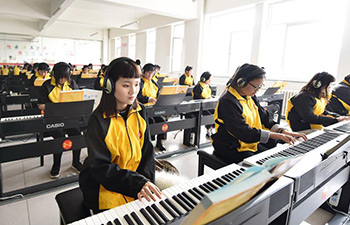CHICAGO, Dec. 6 (Xinhua) -- Researchers at Washington University School of Medicine in St. Louis have developed a new tool described as a "flight data recorder" for developing cells, illuminating the paths cells take as they progress from one type to another.
The study was published on Dec. 5 in the journal Nature.
Using the flight data recorder, the researchers performed experiments that uncovered some surprising details about the specific routes taken by cells that successfully completed their flight paths.
The technique harnesses the natural properties of a virus that inserts tiny DNA "barcodes," called "CellTags," into each cell. As the cells divide, their unique barcodes are passed down to all their descendant cells. The CellTagging technique keeps track of which cells share common ancestors and how far back that common ancestor is found in the lineage.
The researchers found that if a certain gene, called Mettl7a1, was turned on in cells, they were three times as likely to successfully reprogram compared with cells in which this gene is inactive. Another interesting finding was that the cells that were not successful in their reprogramming didn't just end up all over the map. They appeared to converge at the same dead end, tending to revert back to look like the original cell type.
The tool could reveal cellular "reprogramming" routes that might involve reverting skin cells back to different types of stem cells that could then mature into a new liver or other vital organ. Among many potential uses, the tool also could be applied in cancer research, recording the wrong turns normal cells might take to develop into tumors, according to the researchers.
"We are pleased and encouraged to see a number of cancer research groups adopting this technology in their labs," said senior author Samantha A. Morris, an assistant professor of developmental biology at the university. "With this method, they can find out which cells become the cancer and trace their ancestors back in time to see what they were doing early on."
The new information may also help researchers identify the best "pre-flight" conditions to expose the cells to in order to increase the likelihood that their journeys will be successful.

















